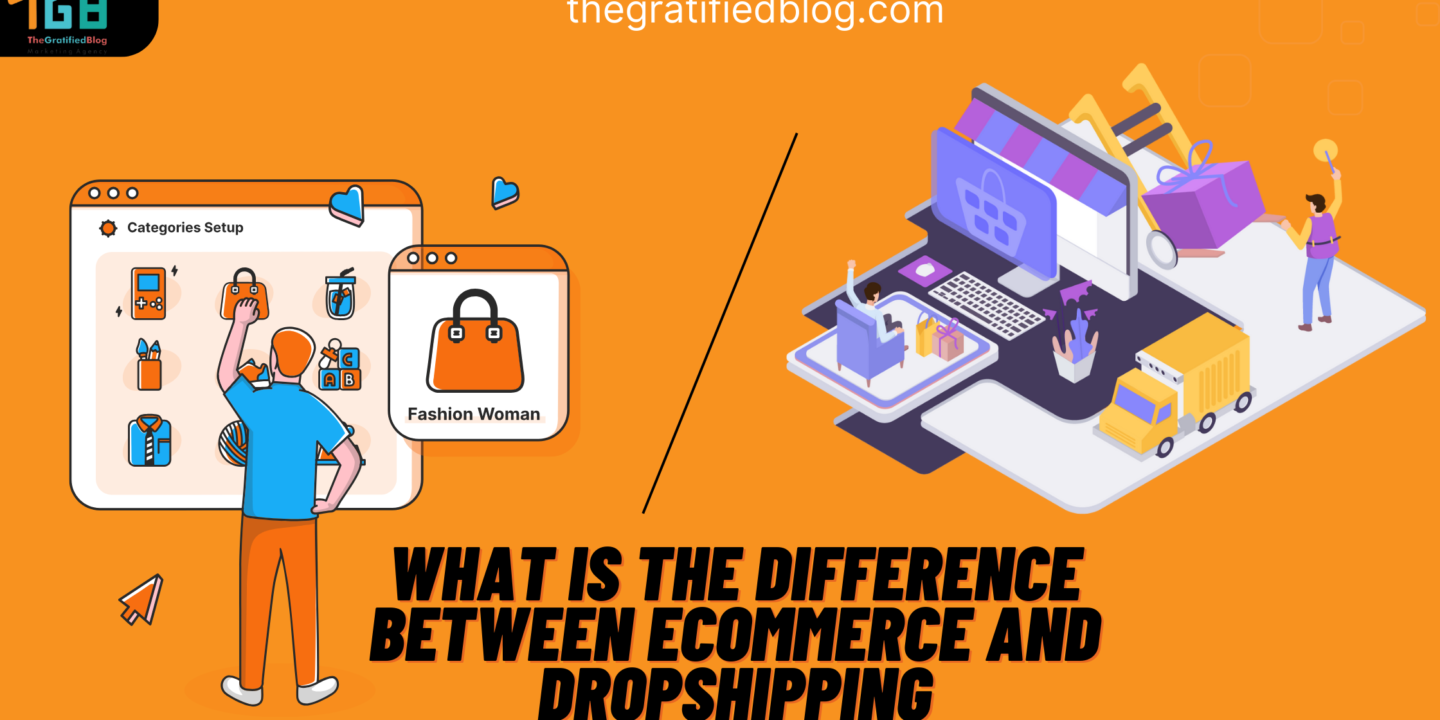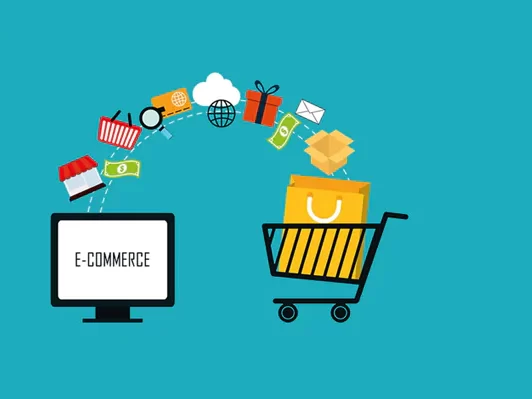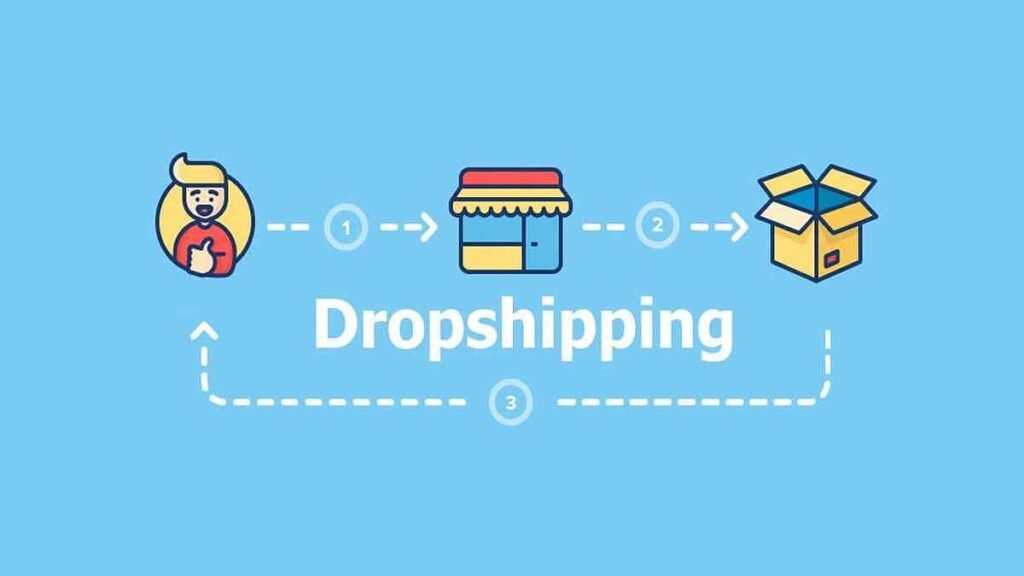
In the ever-changing landscape of online commerce, “What Is The Difference Between Ecommerce And Dropshipping” has gained increasing popularity. These business models present unique opportunities for entrepreneurs launching and managing their online stores.
However, they diverge significantly, influencing your business strategy. In this article, we will delve into “What Is The Difference Between E-commerce And Dropshipping” to elucidate the distinctions, aiding you in making informed decisions as you enter the realm of online retail.
Understanding Ecommerce
Electronic Commerce, or eCommerce, refers to exchanging goods and services over the Internet through buying and selling. This model encompasses various activities, from online marketplaces like Amazon to standalone web stores. Traditional eCommerce typically involves the following key elements:
Inventory Management
In a traditional eCommerce model, the seller maintains its inventory. This means the seller owns, stores, and ships the products. They are responsible for purchasing, stocking, and managing the products they intend to sell on their online store.
Fulfillment
The seller also manages order fulfillment in eCommerce. When a customer orders, the seller is responsible for selecting, packaging, and dispatching the product to the customer’s address. That requires physical space, personnel, and infrastructure for warehousing and shipping.
Control
Ecommerce businesses have complete control over their inventory and shipping processes. They can customize the packaging, branding, and customer experience to a high degree. However, this level of control also comes with more responsibility and overhead.
Upfront Costs
Setting up an eCommerce store usually involves significant upfront costs. These costs may include purchasing or manufacturing inventory, building and maintaining a website, and hiring staff for order fulfillment.
Risk
Ecommerce businesses take on more risk because they must invest in inventory that may or may not sell. If certain products don’t perform well, they may be left with unsold inventory, tying up capital.
Scalability
Scalability in traditional eCommerce requires significant investments in infrastructure and inventory. Expanding the product range or customer base often necessitates more warehouse space and personnel.
Understanding Dropshipping
On the other hand, dropshipping is a business model that has gained popularity as a low-risk and low-investment alternative to traditional eCommerce. It operates differently in several key ways:
Inventory Management
In dropshipping, the seller doesn’t hold inventory. Instead, they partner with suppliers or manufacturers who stock the products. When a customer orders, the seller Acquires the product from the supplier, who subsequently ships it directly to the customer. The seller needs to handle the products physically.
Fulfillment
The suppliers handle order fulfillment in dropshipping. That means the seller doesn’t need to worry about warehousing, packing, or shipping. The supplier takes care of these aspects, giving the seller more time to focus on marketing and customer service.
Control
Dropshipping offers less control over the fulfillment process. Sellers rely on their suppliers for product quality, packaging, and shipping times. While they can choose their suppliers, the ultimate control is less extensive than in traditional eCommerce.
Upfront Costs
One of the critical advantages of dropshipping is that it requires minimal upfront investment. Sellers don’t need to purchase or store inventory; they can start their business with a relatively low budget. The primary expenses are website setting up, maintenance, marketing, and customer support.
Risk
Dropshipping reduces the risk associated with holding inventory. Since sellers only purchase products once sold, they don’t need to worry about unsold stock tying up their capital. However, they risk relying on suppliers to meet orders and promptly uphold product quality.
Scalability
Dropshipping is often seen as a highly scalable model. Vendors can effortlessly incorporate new products into their online store without additional warehousing or personnel. Scaling up can be relatively simple as long as the seller can attract more customers.
What Is The Difference Between Ecommerce And Dropshipping: Key Differences
Now that we have a clear understanding of both eCommerce and dropshipping let’s explore the primary differences between these two models:
1. Inventory Management
Ecommerce: In traditional eCommerce, sellers own and manage their inventory. They purchase, store, and handle the products they sell.
Dropshipping: Dropshipping sellers do not hold inventory. They partner with suppliers who handle inventory, packing, and shipping.
2. Fulfillment
Ecommerce: Sellers in eCommerce manage their order fulfillment, from picking and packing products to shipping them to customers.
Dropshipping: Order fulfillment is outsourced to suppliers, reducing the seller’s involvement.
3. Control
Ecommerce: eCommerce businesses have complete control over their inventory, order fulfillment, and customer experience.
Dropshipping: Dropshipping offers less control, as sellers rely on their suppliers for product quality and fulfillment.
4. Upfront Costs
Ecommerce: Setting up an eCommerce store involves substantial upfront costs, including purchasing inventory, website development, and hiring staff for fulfillment.
Dropshipping: Dropshipping requires minimal upfront investment, primarily related to website development and marketing.
5. Risk
Ecommerce: eCommerce businesses bear the risk of holding unsold inventory, potentially tying up capital. The business’s success is closely tied to product selection and demand forecasting.
Dropshipping: Dropshipping reduces the risk of unsold inventory but introduces new risks related to supplier reliability, product quality, and shipping times.
6. Scalability
Ecommerce: Scalability in traditional eCommerce often requires significant investments in infrastructure and inventory.
Dropshipping: Dropshipping is highly scalable because sellers can easily add new products without additional warehousing or personnel.
Pros And Cons Of Ecommerce

Let’s explore the pros and cons in greater detail regarding the traditional eCommerce model:
Pros Of Ecommerce:
Control:
- Sellers ultimately control their product inventory, quality, and customer experience.
- They can tailor their branding and packaging to create a unique identity.
Profit Margins:
- Sellers can achieve higher profit margins by purchasing products at a reduced expense and then retailing them at a higher price.
Customization:
- Ecommerce businesses can fully customize their website and craft a distinctive online shopping journey for customers.
Product Selection:
- Vendors can select from a wide variety of products in their stores.
Cons Of Ecommerce:
Upfront Costs:
- The initial investment required to set up an eCommerce store can be significant, especially if it involves purchasing or manufacturing inventory.
Risk:
- Ecommerce businesses face the risk of holding unsold inventory, which can tie up capital and potentially lead to financial losses.
Inventory Management:
- Managing and tracking inventory can be complex and time-consuming.
Scalability:
- Expanding an eCommerce business often necessitates additional warehousing and Managing staff and resources, which can incur expenses and consume time.
Pros And Cons Of Dropshipping

Now, let’s examine the strengths and weaknesses of the dropshipping model:
Pros Of Dropshipping:
Low Upfront Costs:
- Dropshipping requires minimal upfront investment, making it accessible to entrepreneurs with limited budgets.
Reduced Risk:
- Sellers do not hold inventory, eliminating the risk of unsold stock tying up capital.
Scalability:
- Dropshipping is highly scalable, as adding new products to the online store is relatively simple.
Focus On Marketing:
- Sellers can focus on marketing, customer service, and growing their business rather than handling inventory and fulfillment.
Cons Of Dropshipping:
Less Control:
- Sellers have limited control over product quality, packaging, and shipping times, which can affect the customer experience.
Supplier Dependence:
- Relying on suppliers means sellers are vulnerable to any issues or changes on the supplier’s side.
Lower Profit Margins:
- Due to the nature of dropshipping, profit margins can be lower compared to traditional eCommerce because of the price markup by suppliers.
- The dropshipping market can be highly competitive, as it’s accessible to many entrepreneurs, leading to price wars and lower profitability.
How To Choose Between Ecommerce And Dropshipping

The choice between traditional eCommerce and dropshipping should align with your business goals, available resources, and risk tolerance. Here are some considerations to help you make an informed decision:
1. Budget And Capital
Dropshipping may be more suitable if you have limited upfront capital and want to start a business with minimal financial risk. However, eCommerce could be a viable option if you have access to a substantial budget and are willing to invest in inventory and infrastructure.
2. Control And Customization
Consider how much control and customization you want over your business operations. Traditional eCommerce may be better if you prefer complete control over product quality, branding, and customer experience. Dropshipping offers less control but more convenience.
3. Risk Tolerance
Assess your risk tolerance. Suppose you’re uncomfortable with holding inventory and its potential financial risks. In that case, dropshipping’s lower risk profile may be appealing. eCommerce may be the right choice if you are confident in your product selection and demand forecasting abilities.
4. Scalability
Think about your growth plans. If you envision scaling your business quickly and easily, dropshipping’s scalability is a strong point. Enabling you to diversify your product offering without managing additional inventory. In contrast, traditional eCommerce requires more investment to scale.
5. Product Selection
Consider the types of products you want to sell. You can readily test various products and niches in dropshipping without committing to large inventory purchases. eCommerce requires more careful product selection and inventory management.
6. Supplier Relationships
Building solid relationships with reliable suppliers is crucial in dropshipping. Dropshipping can be viable if you can access trustworthy suppliers and maintain those relationships. However, eCommerce gives you more control over your supplier relationships.
The Future Of Ecommerce And Dropshipping
Ecommerce and dropshipping will continue evolving with changing consumer behaviors and technological advancements. Here are some trends to watch in these industries:
- Omnichannel Retail: Ecommerce businesses increasingly adopt omnichannel strategies, integrating physical and online sales channels for a seamless shopping experience.
- Sustainable Practices: Both models are moving toward more sustainable and eco-friendly practices as consumers become more Mindful of the environmental consequences of their buying decisions.
- AI and Automation: Automation and artificial intelligence will significantly optimize operations and enhance the customer experience in ecommerce and dropshipping.
- Supply Chain Resilience: Supply chain resilience will be critical, especially for dropshipping businesses that rely on suppliers. Finding multiple reliable suppliers will be essential to mitigate disruptions.
- Personalization: Personalized shopping experiences, from product recommendations to tailored marketing, will become more prominent as businesses seek to engage customers effectively.
Real-World Examples
To better illustrate the differences between eCommerce and dropshipping, let’s look at a couple of real-world examples:
1. Amazon (eCommerce)
Amazon, one of the world’s largest eCommerce platforms, operates on a traditional eCommerce model. It purchases, stores, and fulfills many products on behalf of sellers.
Amazon provides customers with an extensive array of products and uses its extensive logistics network for order fulfillment. The company has complete control over its inventory and fulfillment processes.
2. Shopify (Dropshipping)
Shopify, a prominent e-commerce platform, additionally provides dropshipping solutions for entrepreneurs. Many businesses on Shopify choose to use the dropshipping model, where they partner with suppliers to fulfill orders.
Shopify offers various integrations with dropshipping apps and services, making it accessible for entrepreneurs to start dropshipping businesses with minimal upfront costs.
Conclusion
In summary, choosing between eCommerce and dropshipping depends on your business goals, available resources, and risk tolerance. Traditional eCommerce provides more control but requires a significant upfront investment and carries inventory-related risks.
Dropshipping offers lower upfront costs, reduced risk, and scalability but with less control over product quality and fulfillment.
It’s also worth noting that the two models Are not mutually exclusive, and numerous businesses employ a blend of both to balance control, risk, and profitability.
Ultimately, your choice should harmonize with your specific situation and objectives. Whichever path you choose, the world of online retail offers a multitude of opportunities for entrepreneurial success.








No Comments